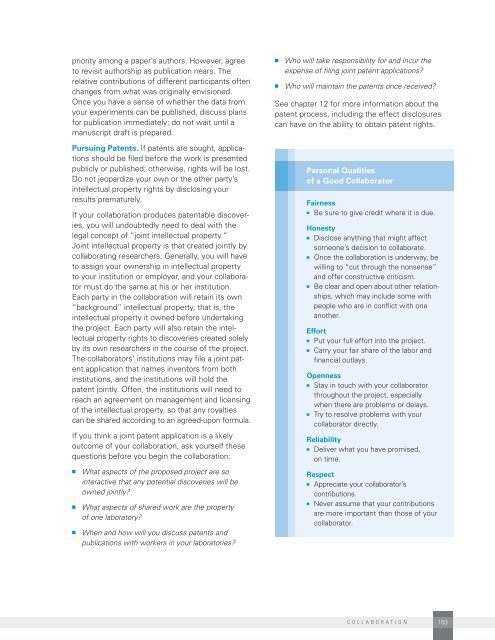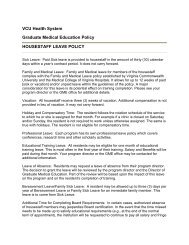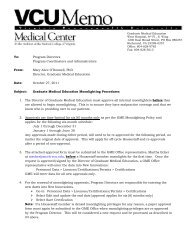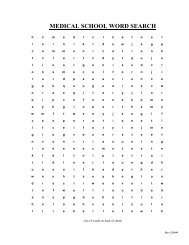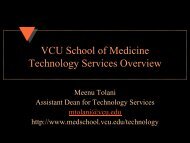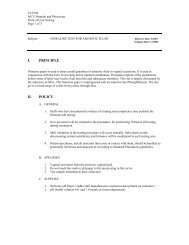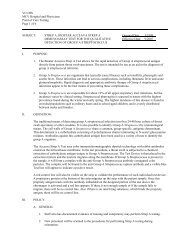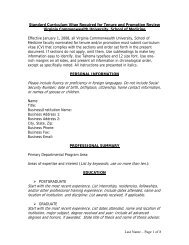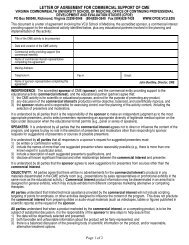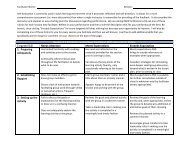Excellence Everywhere - National University of Ireland, Galway
Excellence Everywhere - National University of Ireland, Galway
Excellence Everywhere - National University of Ireland, Galway
- No tags were found...
Create successful ePaper yourself
Turn your PDF publications into a flip-book with our unique Google optimized e-Paper software.
priority among a paper’s authors. However, agreeto revisit authorship as publication nears. Therelative contributions <strong>of</strong> different participants <strong>of</strong>tenchanges from what was originally envisioned.Once you have a sense <strong>of</strong> whether the data fromyour experiments can be published, discuss plansfor publication immediately; do not wait until amanuscript draft is prepared.Pursuing Patents. If patents are sought, applicationsshould be filed before the work is presentedpublicly or published; otherwise, rights will be lost.Do not jeopardize your own or the other party’sintellectual property rights by disclosing yourresults prematurely.If your collaboration produces patentable discoveries,you will undoubtedly need to deal with thelegal concept <strong>of</strong> “joint intellectual property.”Joint intellectual property is that created jointly bycollaborating researchers. Generally, you will haveto assign your ownership in intellectual propertyto your institution or employer, and your collaboratormust do the same at his or her institution.Each party in the collaboration will retain its own“background” intellectual property, that is, theintellectual property it owned before undertakingthe project. Each party will also retain the intellectualproperty rights to discoveries created solelyby its own researchers in the course <strong>of</strong> the project.The collaborators’ institutions may file a joint patentapplication that names inventors from bothinstitutions, and the institutions will hold thepatent jointly. Often, the institutions will need toreach an agreement on management and licensing<strong>of</strong> the intellectual property, so that any royaltiescan be shared according to an agreed-upon formula.If you think a joint patent application is a likelyoutcome <strong>of</strong> your collaboration, ask yourself thesequestions before you begin the collaboration:n What aspects <strong>of</strong> the proposed project are sointeractive that any potential discoveries will beowned jointly?n What aspects <strong>of</strong> shared work are the property<strong>of</strong> one laboratory?n When and how will you discuss patents andpublications with workers in your laboratories?n Who will take responsibility for and incur theexpense <strong>of</strong> filing joint patent applications?n Who will maintain the patents once received?See chapter 12 for more information about thepatent process, including the effect disclosurescan have on the ability to obtain patent rights.Personal Qualities<strong>of</strong> a Good CollaboratorFairnessn Be sure to give credit where it is due.Honestyn Disclose anything that might affectsomeone’s decision to collaborate.n Once the collaboration is underway, bewilling to “cut through the nonsense”and <strong>of</strong>fer constructive criticism.n Be clear and open about other relationships,which may include some withpeople who are in conflict with oneanother.Effortn Put your full effort into the project.n Carry your fair share <strong>of</strong> the labor andfinancial outlays.Opennessn Stay in touch with your collaboratorthroughout the project, especiallywhen there are problems or delays.n Try to resolve problems with yourcollaborator directly.Reliabilityn Deliver what you have promised,on time.Respectn Appreciate your collaborator’scontributions.n Never assume that your contributionsare more important than those <strong>of</strong> yourcollaborator.collaboration153


